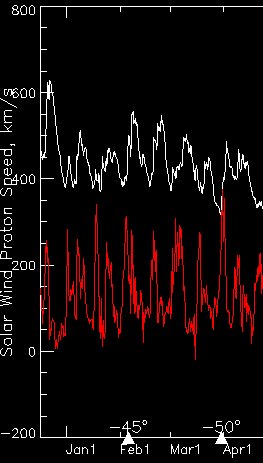This is a cropped portion of a data plot showing the solar wind speed and density from December 1999 - December 2000. Please click on image for full view. In that full view, you can see that wind speeds remain between 200-800 km/s. It's possible, but rare, for solar wind to reach speeds above 800 km/s. All data was collected by the
SWOOPS instrument.
Click on image for full size
NASA, ESA and LANL (the principal investigator of SWOOPS)
Characteristics of the Solar Wind
The sun is flinging 1 million tons of material out into space every second! We call this material
solar wind. The solar wind is very hot, 150,000°K! Because it is so hot, it is not a solid or a liquid or even a gas. Solar wind is plasma.
The solar wind is not very dense at all! Take a look at this picture for comparison with Earth's atmosphere. So even though the solar wind moves SUPER fast (normally in the range from 300 to 600 km/s), it wouldn't even ruffle your hair if you were to stand in a solar wind breeze!
The solar wind goes all the way past Pluto. Scientists hope the Voyager spacecraft will reach the end of the solar wind, the heliopause. Scientists sure are interested to see what the solar wind is like that far out!
You might also be interested in:
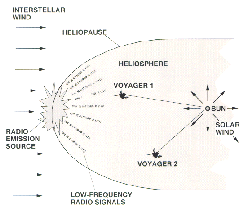
"Helios" is the ancient Greek word for the "sun". The Heliosphere is the entire region of space affected by the sun. The Heliosphere is like a bubble that has the planets and the Sun inside of it. Outside
...more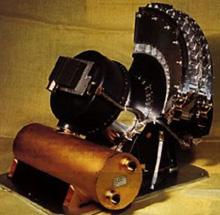
One main goal of the Ulysses mission is to test the solar wind. Scientists are really interested in the wind coming from the north and south poles of the Sun. Solar wind is made up of particles that come
...more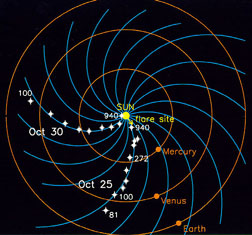
The Sun acts like it has a big magnet in the middle of it. We call this the Sun's magnetic field. The Sun's magnetic field has a fancier name, the Interplanetary Magnetic Field (IMF). This just means that
...more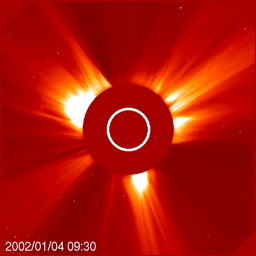
Have you ever seen an explosion before? Maybe you've seen a volcano explode on t.v. Or maybe you've seen a potato explode in the microwave because your mom forgot to poke holes in it. Well, explosions
...more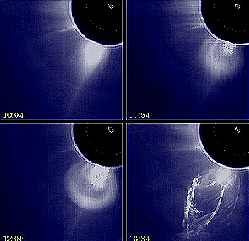
The Sun is not a quiet place, but one that exhibits sudden releases of energy. One of the most frequently observed events are solar flares: sudden, localized, transient increases in brightness that occur
...more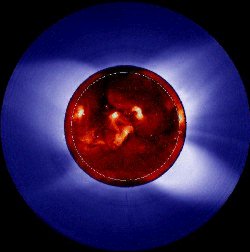
The visible solar atmosphere consists of three regions: the photosphere, the chromosphere, and the solar corona. Most of the visible (white) light comes from the photosphere, this is the part of the Sun
...more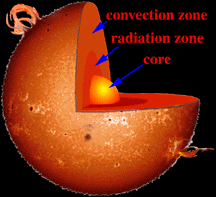
To understand how our Sun works, it helps to imagine that the inside of the Sun is made up of different layers, one inside the other. The center of the Sun is called the core. It is the region where the
...more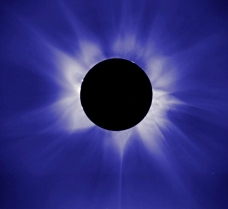
Scientists at the High Altitude Observatory (HAO) try to learn about the changes we see in the Sun over time. They also study how it affects the atmosphere of the Earth. There are four main areas of study
...more


